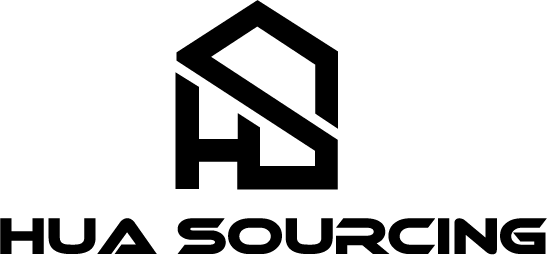Navigating the complex process of importing auto parts from China is a crucial skill for business owners in the automotive industry. As China stands as a global manufacturing powerhouse, it offers an unparalleled range of auto parts that are key to fueling businesses worldwide. This article, titled “Mastering the Art of Importing Auto Parts from China: A Business Owner’s Guide,” provides an in-depth exploration and step-by-step guide to efficiently manage and succeed in this endeavor.
The journey of importing auto parts from China extends beyond mere procurement; it involves a deep understanding of various critical aspects such as quality assurance, regulatory compliance, effective logistics management, and navigating cultural nuances in business practices. Whether you’re a veteran in the industry or new to the world of international trade, this guide is designed to arm you with the essential insights and strategies needed to ensure a smooth, profitable import process.
In this guide, we will delve into the dynamic nature of China’s auto parts sector, a market evolving rapidly with technological innovation and advanced manufacturing techniques. Understanding these elements is crucial for businesses to transform the challenge of importing from China into a significant competitive edge, paving the way for growth and success in the global automotive market.
Embark with us on this comprehensive journey as we unlock the intricacies of importing auto parts from China and lay down the groundwork for a thriving business venture in this sector.
The Landscape of China’s Auto Parts Industry
Understanding the Market Dynamics
China’s auto parts industry represents a significant segment of the global automotive market. Known for its vast manufacturing capabilities, the country has become an essential source for a wide range of auto components, from basic parts to advanced electronic systems. This section delves into the scale, diversity, and evolution of China’s auto parts industry, providing a backdrop against which businesses can contextualize their import strategies.
- Market Size and Growth: Highlight the current market size and projected growth of China’s auto parts sector, focusing on key drivers such as domestic demand, innovation, and international trade policies.
- Key Manufacturing Hubs: Identify the major regions in China known for auto parts manufacturing. Cities like Guangzhou, Shanghai, and Chongqing have become synonymous with auto parts production, each specializing in different types of components.
Quality and Standards
The quality of auto parts produced in China has seen significant improvements over the years. However, understanding the standards and quality control measures is crucial for importers.
- Quality Standards: Discuss the quality standards that Chinese auto parts manufacturers adhere to, such as ISO certifications and specific automotive industry standards.
- Quality Control Practices: Outline common quality control practices in the industry, including factory audits, pre-shipment inspections, and supplier quality assessments.
Innovation and Technology
Technological advancements and innovation are at the forefront of China’s auto parts industry.
- Technological Advancements: Explore the latest technological trends in auto parts manufacturing in China, such as electric vehicle components, autonomous vehicle systems, and smart technology integration.
- R&D Focus: Highlight the emphasis on research and development in the industry, showcasing how Chinese manufacturers are innovating to stay competitive globally.
Identifying and Vetting Suppliers for Importing Auto Parts from China
Finding the Right Supplier
The success of importing auto parts from China hinges on partnering with the right supplier. This involves a thorough vetting process to ensure reliability, quality, and compliance with international standards.
- Researching Suppliers: Begin by researching potential suppliers. Utilize online platforms such as Alibaba and Global Sources, which offer extensive directories of Chinese auto parts manufacturers. Trade shows and industry expos are also valuable for making direct contacts.
- Supplier Verification: Once a potential supplier is identified, verify their credentials. Check their business license, certifications, and customer reviews. Websites like Made-in-China and DHgate often provide supplier ratings and reviews, which can be valuable in assessing their reputation.
- Samples and Prototypes: Request samples or prototypes to evaluate the quality firsthand. Testing these samples under practical conditions is crucial to ensure they meet your specifications and quality standards.
Negotiating Terms
Negotiating favorable terms is a critical step in the process of importing auto parts from China.
- Price Negotiation: Engage in respectful yet assertive negotiations on pricing. Remember, the lowest price is not always synonymous with the best value. Consider quality, lead time, and after-sales service in your negotiations.
- Contract Clarity: Ensure that contracts are clear and comprehensive. They should cover aspects like payment terms, delivery schedules, quality expectations, and dispute resolution mechanisms.
Building Relationships
Establishing a strong relationship with your Chinese suppliers can lead to better pricing, quality, and service in the long run.
- Communication and Cultural Awareness: Effective communication and understanding of cultural nuances can significantly enhance business relationships. Tools like WeChat can be instrumental in maintaining regular communication.
- Long-term Partnerships: View your suppliers as partners rather than mere vendors. Long-term partnerships can lead to better understanding, reliability, and efficiency.
Utilizing Sourcing Agents
For businesses new to importing auto parts from China, using a sourcing agent can be advantageous.
- Expertise and Knowledge: Sourcing agents have local market knowledge and can assist in finding the best suppliers. They can also handle negotiations and quality inspections on your behalf.
- Streamlining the Process: Agents can simplify the import process, handling logistics, and ensuring compliance with import regulations.
Navigating Legal and Shipping Logistics
Legal Considerations
Importing auto parts from China involves adhering to a range of legal requirements and regulations. Understanding and complying with these regulations is essential for a smooth and legally sound import process.
- Customs and Tariffs: Familiarize yourself with the customs procedures and tariffs applicable to auto parts imports in your country. Consult with customs authorities or experts to ensure compliance.
- Import Licenses: Determine if you require any specific import licenses or permits for auto parts. These may vary depending on the nature of the parts.
- Documentation: Ensure that all necessary documentation, such as commercial invoices, bills of lading, and certificates of origin, are accurately completed. Accuracy is crucial to prevent customs delays.
Choosing the Right Shipping Method
Selecting the appropriate shipping method is a critical decision when importing auto parts from China. Different methods offer various advantages and considerations.
- Sea Freight: Ideal for large shipments of auto parts, sea freight offers cost-effectiveness but involves longer transit times. Choose between full-container load (FCL) or less-than-container load (LCL) based on your shipment size.
- Air Freight: Air freight is faster but generally more expensive. It’s suitable for urgent or high-value shipments.
- Express Courier: For smaller shipments with high urgency, consider using express courier services like DHL or FedEx.
Managing Logistics
Managing the logistics of importing auto parts is a multifaceted task that requires careful planning and execution.
- Freight Forwarders: Consider partnering with a reputable freight forwarder. They can handle all aspects of logistics, including pickup from the supplier, shipping, and customs clearance.
- Warehousing: Decide whether you need warehousing facilities in China or your destination country. Warehousing can provide flexibility in managing inventory and order fulfillment.
- Delivery Scheduling: Coordinate delivery schedules with your suppliers to ensure timely arrivals and avoid unnecessary storage costs.
Quality Control and Inspections
Ensuring the quality of auto parts is paramount. Implement quality control measures to safeguard your investment.
- Pre-shipment Inspection: Consider arranging for third-party inspections before shipment. These inspections can identify defects or quality issues before the goods leave China.
- Quality Assurance Protocols: Establish clear quality assurance protocols with your suppliers, including specifications, standards, and testing procedures.
Handling Customs Clearance
Customs clearance is a crucial step in the import process that involves compliance with customs regulations and documentation submission.
- Customs Brokerage: Engage a customs broker or utilize the services of your freight forwarder to assist with customs clearance.
- Documentation Accuracy: Ensure that all required documentation is accurate and complete to avoid customs delays.
Quality Control and Compliance
Ensuring Product Quality
Maintaining the quality of auto parts throughout the import process is vital to the success of your venture. Here’s how you can ensure top-notch quality:
- Supplier Quality Agreements: Develop clear quality agreements with your suppliers. Specify quality standards, inspection procedures, and acceptable tolerances.
- Third-Party Inspections: Consider engaging third-party inspection services to verify product quality before shipment. These independent inspections can identify defects and ensure compliance with specifications.
Meeting Regulatory and Compliance Standards
Adhering to international regulatory and compliance standards is non-negotiable when importing auto parts from China. Ensure your operations meet these standards:
- Regulatory Compliance: Stay updated on regulations governing auto parts imports in your destination country. Compliance with safety, emissions, and environmental regulations is critical.
- Certifications: Verify that the auto parts you import comply with relevant certifications, such as ISO, SAE, or DOT standards.
Handling Recalls and Quality Issues
In the unfortunate event of quality issues or recalls, having a well-defined plan is essential:
- Recall Protocols: Develop a recall plan that outlines procedures for identifying, reporting, and addressing product defects or safety concerns.
- Warranty and Liability: Understand the warranty and liability terms in your contracts with suppliers. Clearly define responsibilities in case of product defects.
Continuous Improvement
Quality control is an ongoing process. Continuously work on improving quality and efficiency:
- Feedback Loop: Establish a feedback loop with your suppliers to address quality issues promptly. Encourage open communication and collaboration.
- Supplier Development: Invest in supplier development to help them improve their manufacturing processes, ultimately benefiting both parties.
Building Long-Term Supplier Relationships
The Value of Strong Supplier Relationships
In the world of importing auto parts from China, forging and nurturing long-term relationships with your suppliers can be a game-changer. These relationships go beyond transactional exchanges and can bring immense benefits to your business.
- Reliability: Long-term suppliers are more likely to be reliable and consistent in delivering quality products. They become invested in your success.
- Streamlined Processes: Over time, you and your suppliers can develop streamlined processes that reduce lead times, lower costs, and enhance efficiency.
Effective Communication
Effective communication is at the heart of building enduring relationships with Chinese suppliers:
- Language and Culture: Consider language barriers and cultural differences. Building cultural awareness and using translation tools can facilitate smoother communication.
- Regular Communication: Maintain regular and open communication with your suppliers. Platforms like WeChat can be valuable for real-time updates and discussions.
Trust and Collaboration
Trust is the cornerstone of any successful long-term relationship. Here’s how to foster trust:
- Transparency: Be transparent about your expectations, requirements, and challenges. Honesty builds trust.
- Collaboration: Collaborate with your suppliers on areas like product development, cost reduction, and process improvement. A collaborative approach benefits both parties.
Strategic Partnerships
Long-term supplier relationships can evolve into strategic partnerships:
- Strategic Planning: Engage in strategic planning with key suppliers to align your goals and explore opportunities for mutual growth.
- Joint Ventures: In some cases, joint ventures or co-development projects can be explored to deepen the partnership.
Maintaining Diversity
While building long-term relationships with key suppliers is valuable, it’s also wise to maintain diversity:
- Risk Mitigation: Diversifying your supplier base can mitigate risks associated with dependence on a single source.
- New Opportunities: Explore opportunities with emerging suppliers to stay agile and competitive in the ever-changing market.
Conclusion and Ongoing Success
As we conclude this comprehensive guide on importing auto parts from China, it’s essential to recognize that this journey is not just about procuring components; it’s about strategically positioning your business for growth and success in the automotive industry. By mastering the art of importing, you’ve tapped into a world of opportunities that China’s auto parts market offers.
Here’s a recap of key takeaways:
- Understanding the Market: China’s auto parts industry is vast and dynamic, with opportunities for businesses of all sizes.
- Supplier Vetting: Finding and vetting reliable suppliers is crucial. Establishing strong relationships with them can lead to mutually beneficial partnerships.
- Legal and Logistics: Comply with legal requirements, choose the right shipping methods, and manage logistics efficiently to avoid delays and setbacks.
- Quality Control: Prioritize product quality and compliance with international standards to maintain the integrity of your imports.
- Long-Term Relationships: Building long-term supplier relationships can bring reliability, efficiency, and strategic advantages to your business.
Your Path to Success
Your journey in importing auto parts from China is an ongoing one. Continue to monitor market trends, invest in supplier relationships, and adapt to industry changes. As you gain experience and expertise, you’ll be better equipped to capitalize on the vast opportunities this industry presents.
Remember, success in importing is not just about acquiring products; it’s about establishing a resilient and thriving business that contributes to the ever-evolving landscape of the automotive sector.
If you’re planning to buy from China, consider partnering with a reputable China sourcing agent. Their expertise can save you time, reduce risks, and potentially lead to greater business success. Research thoroughly, choose wisely, and take the first step towards a safer and more efficient sourcing strategy. Huasourcing.com stands out as a trusted ally for businesses involved in international import-export endeavors. Our expertise in navigating the Chinese market, coupled with a commitment to professionalism and transparency. With a proven track record of connecting businesses with reliable suppliers, our platform ensures a seamless process from selection to shipment. Trust Huasourcing.com to be your gateway to quality, reliability, and efficiency in international trade. Visit our website today and experience the difference that a trusted partner can make for your business.








